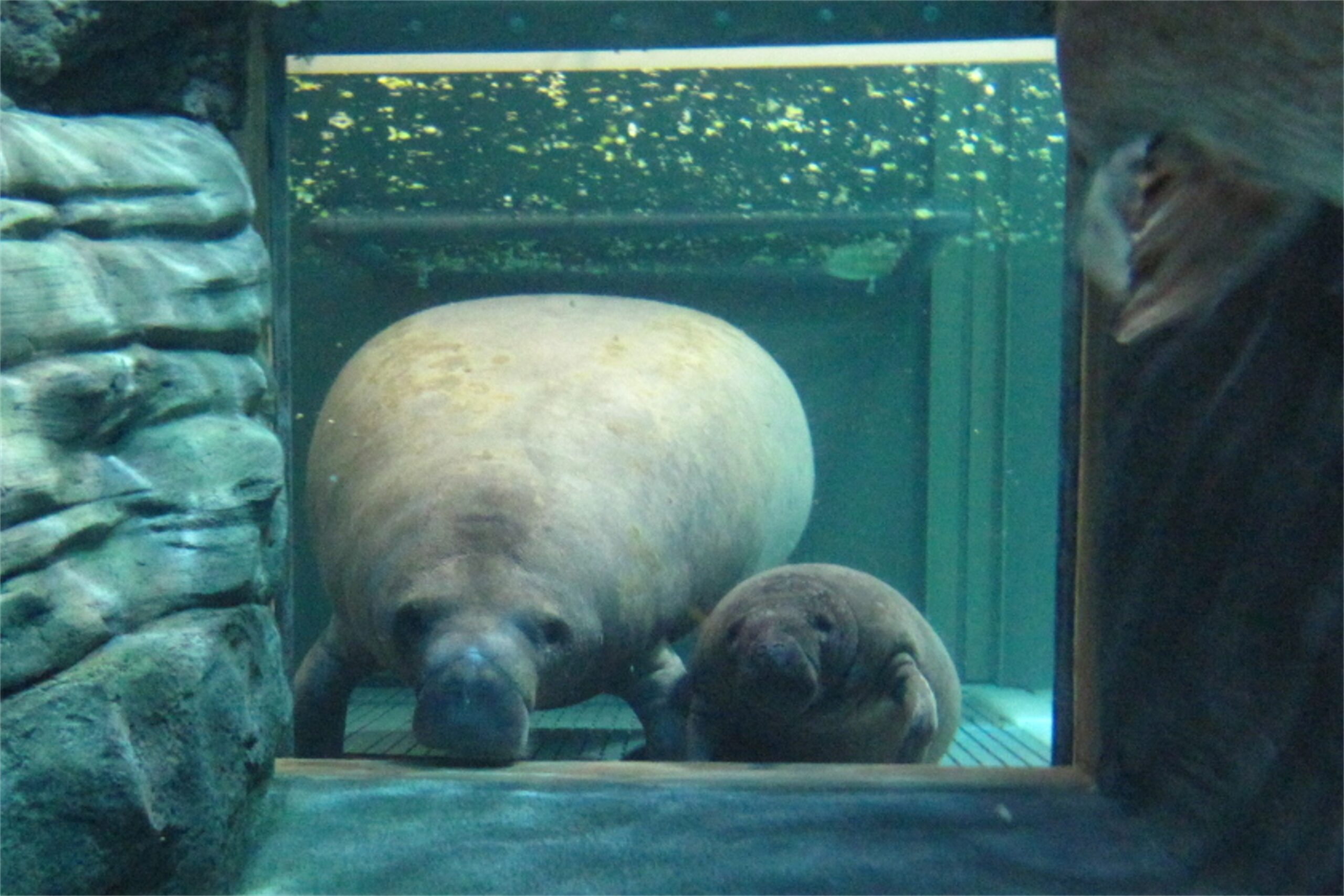Cincinnati Zoo Welcomes Back Manatees
Two New Manatees Scheduled to be on Display Thursday, April 1
CINCINNATI – The Cincinnati Zoo & Botanical Garden is excited to welcome two manatees to their new home at Otto M. Budig Family Foundation Manatee Springs! The Zoo’s first-ever female manatees, “Turner” and “CC Baby,” will arrive at the Zoo late Wednesday evening, March 31. Zoo staff will escort the pair back to Cincinnati from their current home at Tampa’s Lowry Park Zoo. After settling in to their new home overnight, they are expected to be on display to the general public Thursday, April 1. (MEDIA OPPORTUNITY SCHEDULED FOR THURSDAY, APRIL 1, AT 10:30 AM. – GENERAL PUBLIC WILL BE INVITED TO SEE THE MANATEES FOR THE FIRST TIME AFTER 10:30 AM.)
CC Baby, a 550 pound manatee, was rescued from the Caloosahatchee River in September 2007 as an orphaned calf and has been hand-raised at Tampa’s Lowry Park Zoo. Turner, a 450 pound manatee, was rescued from the waters of Tampa Bay in January 2010, after suffering from natural cold stress. U.S. Fish & Wildlife Service (USFWS) officials worked with Tampa’s Lowry Park Zoo to coordinate the rescue after Turner’s behavior was identified as being problematic.
According to the USFWS, “the period of prolonged cold weather in Florida earlier this year exposed manatees to colder than normal water temperatures. Exposure to low temperatures over a period of time can cause a condition called “manatee cold-stress syndrome,” which can result in death.” Due to this condition, manatees like Turner, have been rescued and are recovering at partner zoos and organizations throughout the country.
The Cincinnati Zoo is one of only two facilities outside of Florida to participate in the USFWS’ Program. This Program began in 1973 with the mission of rescuing and rehabilitating distressed and injured Florida manatees. The fundamental purpose of the program is to release these rehabilitated manatees back into their wild habitat. Since the Cincinnati Zoo opened Manatee Springs in 1999, six manatees have now been released back into the wild.
On February 15, 2010, “Slip” was released with over 140 other manatees lingering in the clear, warm waters of Blue Spring State Park in Florida. Both CC Baby and Turner are scheduled to be released to the wild in the winter of 2011.
The Cincinnati Zoo’s manatee program has been on hold for the last five months, while the USFWS selected two manatees to return to the Zoo. During the hiatus, the Zoo has made the most of the opportunity by upgrading the manatee tank and mechanical systems in preparation for its new residents.
“Without a doubt, manatees are one of the most charismatic creatures and certainly one of the Zoo’s most popular animals,” said Thane Maynard, Director of the Cincinnati Zoo & Botanical Garden. “We are extremely proud to be part of this conservation program since 1999 and excited to welcome Turner and CC Baby to the Cincinnati Zoo.”
Manatees can live up to 60 years of age. However, human activities throughout the years have accounted for about one-third of the known manatee deaths each year with watercraft collisions comprising the greatest human-related threat. Most adult manatees bear permanent scars from watercraft propeller strikes. In January of 2010, the Florida Fish and Wildlife Conservation Commission’s (FWC) Fish and Wildlife Research Institute (FWRI) reported a preliminary count of 5,076 manatees statewide. This aerial survey is the highest population count since surveys began in 1991. Unfortunately, the number of known mortalities continues to increase.
###
The world famous Cincinnati Zoo & Botanical Garden was rated the #1 attraction locally and one of the top zoos in the nation by Zagat Survey. It was recognized by Parents Magazine as #7 on the “Top 10 Best Zoos for Kids.” It has also been recognized by Child Magazine as one of “The 10 Best Zoos for Kids.” Over one million people visit the Zoo’s award-winning exhibits, and more than 500 animal and 3000 plant species annually. The Zoo is an accredited member of the American Zoo & Aquarium Association (AZA) and the American Public Gardens Association (APGA), is internationally known for its success in the protection and propagation of endangered animals and plants, and engages in research and conservation projects worldwide.

